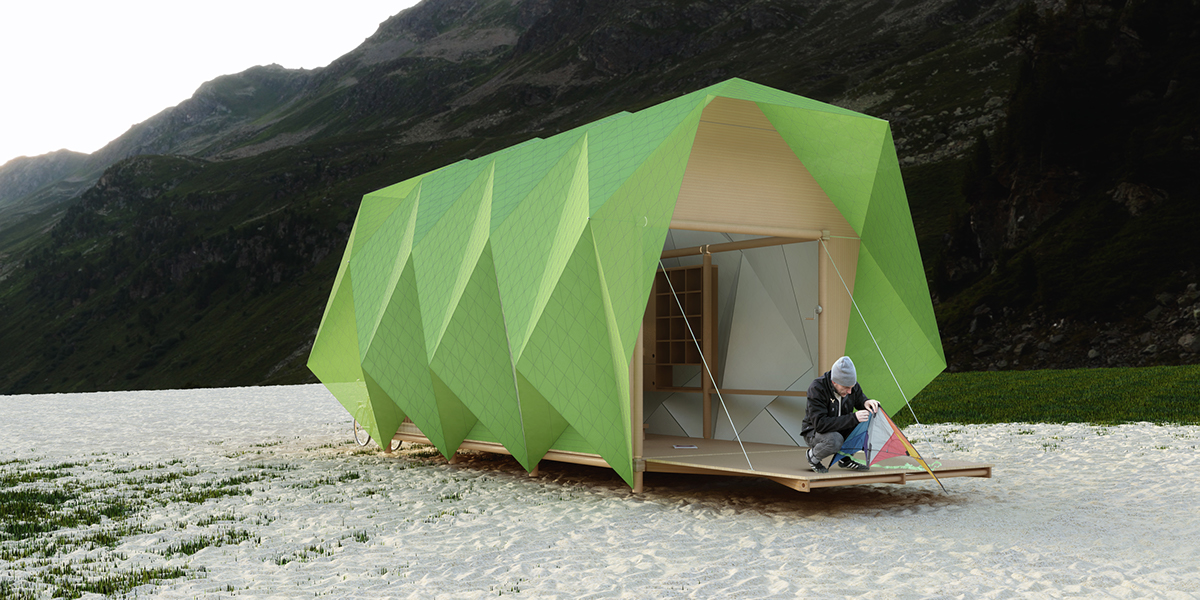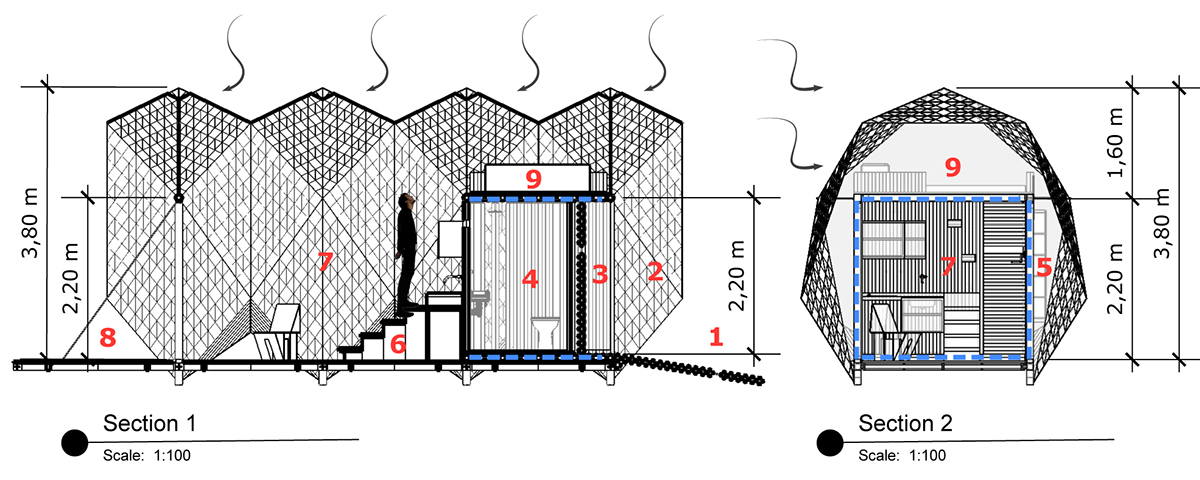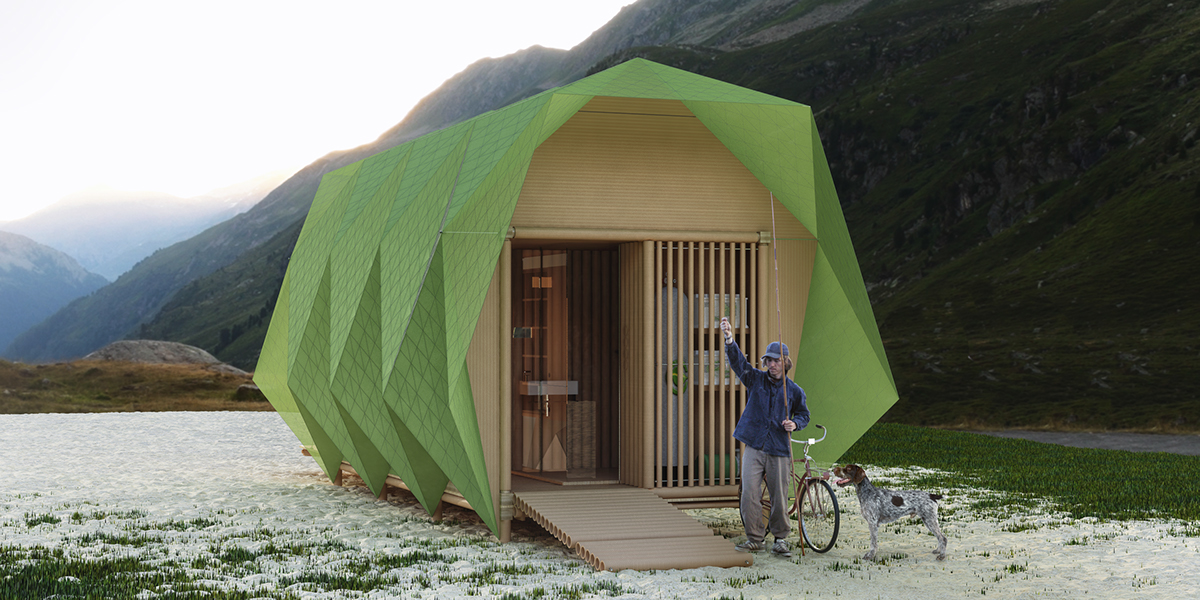"At least in one thing plants are a lot smarter than humans:
over billions of years, they developed perhaps the most efficient power supply in the world: photosynthesis"



2030 photosynthesis habitat ///
A vision of how we can live simply and self-sufficient in the near future. This tiny house combines rudimentary techniques and high-end materials from advancement of nanoscience in recent years. Imagine a scenario not too far away – the 30s, being used as temporary shelter or even as a permanent refuge from urban chaos. Something extremely lightweight, easy to assemble and transport. The idea is to be simple, inexpensive and accessible to all. The base material used is cardboard tubes and plates.
To ensure a permanent durability of the construction, all parts are sealed with a hydrophobic coating spray. In addition to the structural function, the tubes around the bathroom make up a cyclic system of storage, treatment and reuse of water, with total capacity of 3200L, ensuring water supply besides granting weight to anchoring the building to the ground.
The roof and side walls are made with a lightweight and resitent cover, with geometry based on ancient folding techniques. Its surface is made up of a nano-tech material able to do artificial photosynthesis 24 hours per day. This process results in a large scale production of a kind of biogas that can be stored in a common cylinder and transformed into a clean electrical energy sufficient to supply all around necessity. The cyclic storage, treatment and reusing of water is taken from 80 papertubes (100mm) . Each tube is capable of holding 40L of water, making a total of 3200L of water.
The 20m2 module is airtight and has compact dimensions: 2.5mx 6m at the base, plus a bedroom on the upper level. Despite the small size, the indoor environment is at the same time spacious and cozy.













______________________________________________________________________________________________________
In 2016, this project was published in Self-Sufficient Habitat book. See more info here: http://actar.com/self-sufficient-habitat/


